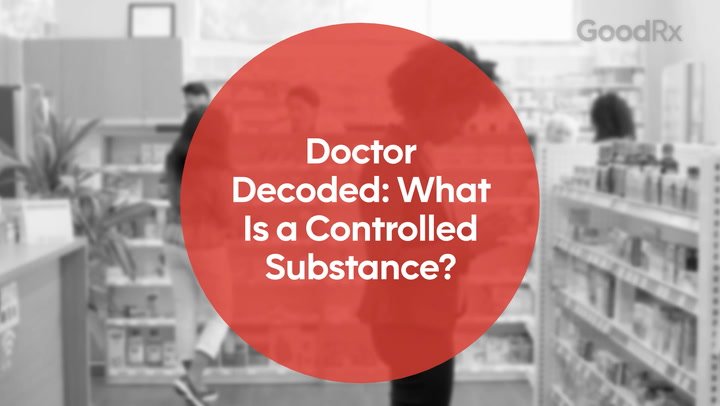
11 Adderall Interactions: Caffeine, Antidepressants, Sudafed, and More
Key takeaways:
Adderall (mixed amphetamine salts) is a prescription stimulant medication. It’s thought to work by increasing dopamine, norepinephrine, and serotonin levels in the brain.
Adderall can interact with other medications that affect serotonin, including many antidepressants. It can also interact with blood pressure medications, caffeine, and alcohol.
Some Adderall interactions can be managed with lower dosages and close monitoring. Other interactions may need to be avoided completely. Your prescriber can determine how to manage these potential Adderall interactions.
Table of contents

Before you pick up your Adderall (mixed amphetamine salts) prescription from the pharmacy, your pharmacist reviews your medication profile to make sure it's safe for you to take. This includes checking for potential drug interactions that need to be addressed ahead of time.
But awareness of possible interactions shouldn’t be limited to prescription medications. You may encounter other interacting substances, such as over-the-counter (OTC) products, foods, and beverages, at any time during treatment.
So, what interactions should you be aware of with Adderall? It’s thought to work by increasing dopamine, norepinephrine, and serotonin in the brain. Many interactions are with other medications that do the same. Here’s what you should know about Adderall interactions.
Adderall interactions list
These medications, supplements, and drinks can interact with Adderall:
Monoamine oxidase inhibitors (MAOIs), such as selegiline (Emsam, Zelapar), rasagiline (Azilect), and phenelzine (Nardil)
Selective serotonin reuptake inhibitors (SSRIs), such as fluoxetine (Prozac), sertraline (Zoloft), and paroxetine (Paxil)
Serotonin and norepinephrine reuptake inhibitors (SNRIs), such as venlafaxine (Effexor XR) and duloxetine (Cymbalta)
Tricyclic antidepressants, such as amitriptyline
Antihistamines, such as doxylamine (Unisom)
Lithium (Lithobid)
Certain antiseizure medications, such as ethosuximide and phenytoin
Triptans, such as sumatriptan (Imitrex), zolmitriptan (Zomig), and rizatriptan (Maxalt)
Opioid pain medications, such as tramadol (ConZip, Qdolo), fentanyl, and methadone
Blood pressure medications, such as lisinopril (Zestril), amlodipine (Norvasc), and metoprolol (Lopressor, Toprol XL)
Other stimulants, such as phentermine (Adipex-P) and pseudoephedrine (Sudafed)
Urine alkalinizers, such as Cytra-K (potassium citrate / citric acid)
Supplements, such as St. John’s wort and vitamin C
Caffeine, including coffee, energy drinks, and caffeine pills
Below, we review 11 potential Adderall interactions and how to manage them. Keep in mind that this isn’t a complete list. So, it’s best to share your current medication list with your healthcare team to screen for potential interactions.
1. MAOIs like selegiline
MAOIs are an older class of antidepressants. They’re sometimes used to treat depression and Parkinson’s disease symptoms.
Adderall should not be taken with an MAOI and for at least 2 weeks after stopping an MAOI. That’s because this combination can cause dangerously high blood pressure levels, which could lead to heart attack, stroke, or death.
What’s more, Adderall and MAOIs increase serotonin in the brain. Taking them together can raise your risk of serotonin syndrome. This is a condition caused by too much serotonin in the body.
Adderall dosage: Learn more about typical Adderall dosages for adults and children, plus steps to take if you miss your dose or take too much.
When to take Adderall: Our pharmacists answer commonly asked questions about Adderall, like the best time to take this medication and what side effects you may experience.
IR or XR? Read more about the differences between Adderall IR and Adderall XR and which one might be right for you.
While many cases of serotonin syndrome may be mild, others can become life-threatening. Examples of symptoms include sweating, tremors (shaking), and a fast heartbeat.
2. SSRIs like Prozac
SSRIs are often used to treat depression and other mental health conditions. They’re thought to work by making more serotonin available in your brain.
Similar to MAOIs, combining Adderall with an SSRI can increase the risk of serotonin syndrome. But you don’t necessarily need to avoid this combination altogether. If you take both medications, you may be prescribed a lower Adderall dosage.
If you’re taking Adderall with an SSRI, you may be instructed to watch for symptoms of serotonin syndrome. If symptoms develop, contact a healthcare professional right away for guidance. But if any symptoms feel severe or life-threatening, call 911 or go to the nearest ER.
Good to know: Certain SSRIs, such as paroxetine and fluoxetine, can potentially interact with Adderall in other ways. They may interfere with how your body breaks down Adderall, resulting in higher levels. This can increase your risk of side effects such as a fast heartbeat and sleeping problems. In this situation, you may be prescribed a lower Adderall dosage.
3. SNRIs like Effexor
SNRIs are another class of antidepressants. They’re used to treat mental health conditions and certain types of pain. SNRIs increase serotonin, similar to SSRIs. But they also increase a chemical called norepinephrine. Adderall does, too.
Combining Adderall with an SNRI can increase your risk of serotonin syndrome. As with SSRIs, you may be told to watch for symptoms of high serotonin levels. If any symptoms feel severe or life-threatening, get emergency medical attention.
SNRIs can also increase your blood pressure and heart rate. Adderall can have a similar effect. These increases may be small if you’re just taking one of these medications. But they may be more pronounced if you take Adderall and an SNRI together. In this case, your prescriber may monitor your blood pressure and heart rate more closely during treatment.
4. Triptan migraine medications
Triptan medications are used to treat migraine headaches. They work by attaching to your brain's serotonin receptors (binding sites). Similar to SSRIs and SNRIs, taking a triptan with Adderall can increase the risk of serotonin syndrome.
Triptans are only taken as needed for migraines. So, it’s not the type of medication you take every day or on a scheduled basis. While the risk of serotonin syndrome may be low, it’s still a good idea to be aware of it.
Keep in mind that Adderall can also cause headaches as a side effect. If you’re experiencing headaches more often after starting Adderall, let your healthcare team know. They may need to adjust your medications.
5. Pain medications like tramadol
Tramadol (ConZip, Qdolo) is a prescription opioid medication used to treat pain. In addition to its effects on opioid receptors, tramadol also increases serotonin levels. Some other opioids are known to have a similar effect, such as fentanyl and methadone.
Taking Adderall and tramadol together can increase your risk of serotonin syndrome. But this may also be the case with Adderall and other opioids, too. In fact, opioids have a serotonin syndrome warning for when they’re taken with medications that increase serotonin.
You may only be taking an opioid for a short time. Even so, it’s a good idea to watch for serotonin syndrome symptoms. Let your healthcare team know right away if you think you’re experiencing them. If needed, they can discuss non-opioid pain reliever options and other tips for managing pain.
6. Blood pressure medications
As mentioned above, Adderall can cause an increase in blood pressure and heart rate. Sometimes, this increase is small, but it may be more significant for some people. If you’re taking medications to manage your blood pressure, they may not work as well with Adderall.
Your healthcare team may have you monitor your blood pressure at home more often if you’re taking Adderall. Let them know if your readings are higher than usual. They may also suggest a non-stimulant medication if Adderall is increasing your blood pressure too much. If you have a pre-existing heart condition, you may need to avoid Adderall together.
7. Other stimulants like phentermine and Sudafed
As mentioned, stimulant medications like Adderall can cause side effects such as increased blood pressure and a faster heart rate. They can also cause sleeping problems and make you feel anxious or restless. These effects may be worse if you combine Adderall with other stimulants, such as phentermine or pseudoephedrine
In some cases, combining stimulants may increase the risk of very high blood pressure and irregular heartbeats. So, it’s a good idea to check with your healthcare team before taking them with Adderall.
If you’re treating sinus congestion, there are safer alternatives you can try instead of Sudafed. This includes home remedies, such as nasal saline rinses. There are also non-stimulant phentermine alternatives for weight loss. Discuss your options with a healthcare professional.
8. Urine alkalinizers like Cytra-K
Urine alkalinizers like Cytra-K can be used to prevent kidney stones and gout. They work by making your urine less acidic (more alkaline). Making your urine more alkaline can decrease how well your kidneys remove Adderall, leading to higher levels of Adderall remaining in your body.
Higher Adderall levels can increase the likelihood of side effects, so it’s recommended to avoid taking urine alkalinizers with Adderall.
9. Supplements like St. John's wort and vitamin C
Prescription and OTC medications aren’t the only substances that can interact with Adderall. Supplements like St. John’s wort and vitamin C can also pose risks.
Similar to SSRIs and SNRIs, St. John’s wort can increase serotonin in the brain. If you take it with Adderall, there’s a higher risk of serotonin syndrome. So, it’s a good idea to talk to your healthcare team before starting St. John’s wort or any other OTC supplement.
Vitamin C, on the other hand, can potentially lower Adderall levels in the body. That’s because it’s an acidifying substance, which may affect how much Adderall is absorbed and removed from the body. To manage this interaction, your Adderall dosage may be adjusted. You may also be instructed to separate your Adderall dose from when you take vitamin C supplements or consume citrus fruits or juices.
10. Caffeine
Adderall and caffeine are both stimulants. As mentioned earlier, taking two stimulants together can worsen Adderall side effects, such as sleeping problems and an elevated heart rate.
Caffeine comes in many different forms, including coffee, energy drinks, and pills. If consuming caffeine is part of your usual routine, it’s a good idea to limit the amount with Adderall. Check out a few noncaffeinated ways to start your day with natural energy.
11. Alcohol
Another beverage that interacts with Adderall is alcohol. While Adderall acts to stimulate your brain, alcohol does the opposite. So, consuming alcohol can potentially counteract the therapeutic effects of Adderall.
On the flip side, Adderall can reduce the effects of alcohol. In this case, you may consume more alcohol before feeling intoxicated. And the more you drink, the greater the risk of negative health effects, including alcohol poisoning.
In general, it’s best to avoid or minimize alcohol if you’re taking Adderall. Speak with your healthcare team about your individual risks and any recommendations for your specific situation. They can also provide assistance if you need help to stop drinking.
Frequently asked questions
One of the most common Adderall side effects is loss of appetite. This is because it increases chemicals in the brain that can affect your hunger. As a result, some people taking Adderall lose weight during treatment.
You shouldn’t take Adderall if you’re allergic to any of its ingredients, or if you’re currently taking or have taken an MAOI within the last 14 days.
For other people, Adderall’s risks may outweigh its benefits in certain situations. Your prescriber will decide if Adderall is safe for you to take if you:
Have certain health conditions, such as heart disease, high blood pressure, kidney problems, or seizures
Have a mental health condition, such as bipolar disorder or depression
Have a history of a substance use disorder
Are currently pregnant or planning to become pregnant
Are currently nursing or planning to nurse
The following foods can potentially interfere how Adderall works:
Citrus fruits and juices, which can interfere how well your body absorbs Adderall
Acidic foods, such as tomatoes, which can also affect Adderall’s absorption
High-fat meals, which can make it take longer for Adderall to start working
Alcohol, which can counteract Adderall’s effects
The bottom line
Adderall (mixed amphetamine salts) can interact with other medications that increase serotonin or have stimulant effects. Examples include antidepressants, triptans, and phentermine (Adipex-P). Over-the-counter (OTC) medications and supplements can also interact with Adderall. Examples include pseudoephedrine (Sudafed), St. John’s wort, and vitamin C.
For some Adderall interactions, your healthcare team may monitor you or lower your dosage. Other interactions may need to be avoided altogether. Speak with your prescriber or pharmacist if you have questions about Adderall interactions.
Why trust our experts?



References
Burel Pharmaceuticals. (2024). Dextroamphetamine saccharate, amphetamine aspartate monohydrate, dextroamphetamine sulfate, and amphetamine sulfate capsule, extended release [package insert]. DailyMed.
Foong, A., et al. (2018). Demystifying serotonin syndrome (or serotonin toxicity). Canadian Family Physician.
MedlinePlus. (2024). Dextroamphetamine and amphetamine.
National Institute on Drug Abuse. (2020). Misuse of prescription drugs research report: Is it safe to use prescription drugs in combination with other medications?
Prescriber’s Digital Reference. (n.d.). Adderall. ConnectiveRx.
Teva Pharmaceuticals USA. (2024). Adderall- dextroamphetamine saccharate, amphetamine aspartate, dextroamphetamine sulfate, and amphetamine sulfate tablet [package insert]. DailyMed.
U.S. Food and Drug Administration. (2016). FDA drug safety communication: FDA warns about several safety issues with opioid pain medicines; requires label changes.
U.S. Food and Drug Administration. (2023). Drug development and drug interactions | Table of substrates, inhibitors and inducers.
Wang, Y., et al. (2019). Effects of food on the bioavailability of amphetamine in healthy adults after administration of SHP465 mixed amphetamine salts extended-release capsules. Drugs in R&D.
Was this page helpful?
Related Articles
Browse medications
View AllResearch prescriptions and over-the-counter medications from A to Z, compare drug prices, and start saving.




























